What is CNC Grinding? It’s a question that often sparks curiosity in those unfamiliar with the intricacies of manufacturing processes. Imagine a precision dance between metal and machine, choreographed with meticulous detail and executed with unparalleled accuracy.
CNC Grinding, short for Computer Numerical Control Grinding, represents the pinnacle of machining technology, where computer-guided precision meets the artistry of material manipulation.
In this realm, raw materials are sculpted into precise shapes and dimensions, transforming mundane pieces of metal into vital components of our modern world. Let’s delve into the depths of CNC Grinding to uncover its secrets and unveil the transformative power it holds within the manufacturing industry.
What is CNC Grinding?
CNC grinding, short for Computer Numerical Control grinding, is a precision machining process used to produce intricate and accurate components from various materials such as metal, ceramics, and plastics.
Unlike conventional grinding methods where operators manually control the grinding wheel’s movement, CNC grinding employs computerized controls to automate and optimize the grinding process.
This technology allows for precise control over factors like speed, depth of cut, and tool positioning, resulting in consistent and high-quality finished products. With CNC grinding, manufacturers can achieve tight tolerances, complex geometries, and superior surface finishes, making it indispensable in industries ranging from automotive and aerospace to medical device manufacturing.
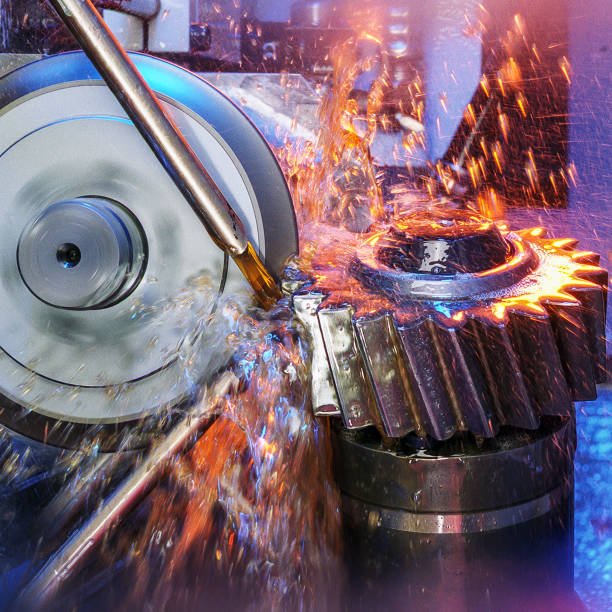
Types of CNC Grinding
CNC grinding is a diverse realm, far from a one-size-fits-all process, offering a plethora of types tailored to meet specific requirements. Let’s explore the various types of CNC grinding:
Surface Grinding
Surface grinding is a machining method that yields smooth and flat surfaces on workpieces. Here, a rotating abrasive wheel grinds the workpiece’s surface to eliminate material, crafting a precise finish. This technique is often employed for producing flat surfaces with tight tolerances.
Cylindrical Grinding
In cylindrical grinding, cylindrical or rod-shaped workpieces are ground to precise dimensions and surface finishes. The workpiece rotates within a defined diameter while a grinding wheel moves along its length, shaping it into a cylindrical form. This process finds utility in crafting shafts, rods, and similar cylindrical components.
Centerless Grinding
Centerless grinding involves supporting the workpiece between two wheels: a grinding wheel and a regulating wheel. As the rotating grinding wheel removes material, the regulating wheel’s lateral movement governs the workpiece’s rotational speed and feed rate. This method is favored for high-volume production of cylindrical components with stringent tolerances.
Internal Grinding
Internal grinding machines the inner surfaces of holes or bores within a workpiece. A small grinding wheel or abrasive tool is inserted into the hole and rotated to remove material, achieving the desired dimensions and surface finish. It is commonly used for crafting precise internal features in components such as bearings, cylinders, and hydraulic valves.
Creep Feed Grinding
Creep feed grinding is a specialized form of surface grinding that entails removing substantial material at a slow feed rate. This technique is well-suited for machining deep slots, intricate profiles, and irregular shapes in hard-to-machine materials. Offering high material removal rates and superior surface finishes, creep feed grinding is ideal for applications prioritizing productivity and precision.
Special Grinding
Special grinding encompasses a variety of specialized techniques tailored to specific machining requirements. These methods utilize cutter grinders to remove material efficiently and achieve exceptional surface finishes. Special grinding techniques are indispensable for applications demanding both productivity and precision.
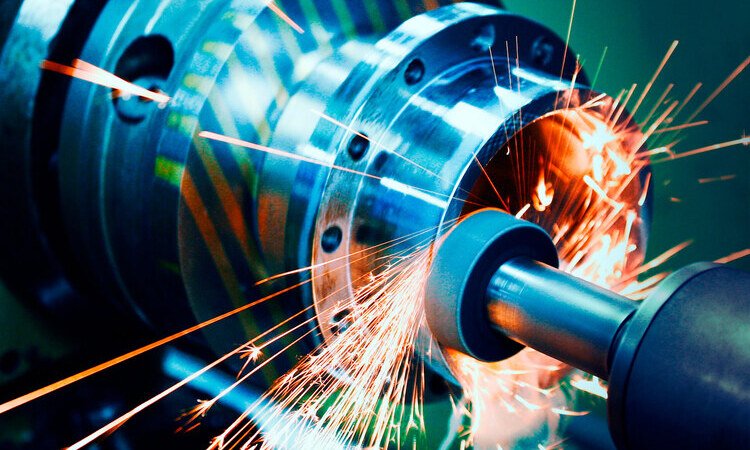
Advantages of CNC Grinding
CNC grinding boasts a myriad of advantages that elevate standards in modern manufacturing. These advantages include:
Precision and Accuracy
CNC grinding encompasses specialized processes like thread grinding, gear grinding, and profile grinding, tailored to specific applications or materials. Each technique is optimized for machining particular components or achieving specific surface characteristics, ensuring unparalleled precision and accuracy.
Superior Grinding Surface
The controlled nature of CNC grinding yields high-quality surface finishes that meet the most stringent requirements. With smooth, uniform surfaces free from defects such as burrs or chatter marks, CNC grinding ensures outstanding grinding surface quality.
Versatility
CNC grinding is exceptionally versatile, capable of accommodating a wide range of workpiece shapes, sizes, and materials, making it a preferred choice across diverse manufacturing sectors.
Automation
A significant advantage of CNC grinding is its automation capabilities. Once programmed, CNC machines can operate autonomously, minimizing the need for manual intervention and maximizing efficiency.
Large Quantity Production
In environments requiring high-volume production, CNC grinding shines. It excels in machining large components with precision and efficiency, making it indispensable for mass production scenarios.
Safety
CNC grinding enhances workplace safety by reducing operator exposure to hazardous machining processes. Automated controls and safety features mitigate risks associated with manual grinding and machining operations, ensuring a safer working environment.
Cost Savings
CNC grinding offers substantial cost savings compared to conventional machining methods. Through optimized material usage, reduced scrap, and streamlined production processes, CNC grinding helps manufacturers achieve higher efficiency and lower per-part costs, ultimately driving profitability.
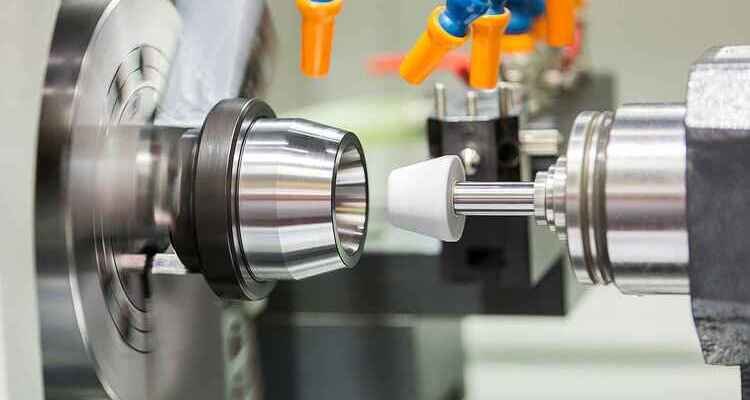
How Does CNC Grinding Operate?
Programming
In the initial stage, engineers utilize specialized software to craft a program outlining the grinding process. This program encompasses instructions for parameters like depth of cut, feed rate, grinding wheel diameter, speed, and tool path.
Setup
Following program creation, the workpiece is securely affixed onto the wheel head of the CNC grinding machine. This setup ensures stability and precision throughout the grinding process.
Commencement of Grinding
The CNC machine operator initiates the grinding process by executing the programmed instructions and activating the grinding wheels. The machine meticulously controls the movement of the grinding wheel in relation to the workpiece. As the grinding wheel rotates, it eliminates material from the workpiece surface to achieve the desired shape and finish.
Monitoring
Throughout the grinding process, operators monitor the machine’s performance and make adjustments as necessary. They observe factors such as grinding wheel wear, coolant flow, and temperature to maintain optimal conditions for superior results.
Inspection
Upon completion of the grinding operation, the finished workpiece undergoes inspection to ensure dimensional accuracy and surface finish. This inspection may involve utilizing precision measurement tools such as micrometers, calipers, or coordinate measuring machines (CMMs).
Post-Processing
Further post-processing steps may be carried out based on the specific requirements of the workpiece. This could entail deburring, polishing, or applying surface treatments to enhance the final product’s aesthetics and functionality.
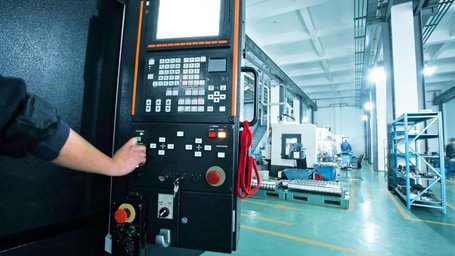
Materials Suitable for CNC Grinding
Metals
CNC grinders are adept at machining various metals, including steel, aluminum, titanium, stainless steel, brass, and copper. They excel in achieving precise shapes, dimensions, and surface finishes on metal components crucial in industries such as automotive, aerospace, and machinery manufacturing.
Ceramics
Ceramic materials like silicon carbide, alumina, zirconia, and ceramic composites can be effectively machined using CNC grinders. This process enables the production of intricate ceramic components with tight tolerances and superior surface finishes, catering to applications in electronics, aerospace, and medical devices.
Plastics
A wide range of plastics, including nylon, PVC, acrylic, polycarbonate, and polyethylene, can be machined with CNC grinders. Offering precise control over material removal, CNC grinding facilitates the production of custom plastic components with smooth edges, accurate dimensions, and excellent surface finishes. These components find application in industries such as consumer electronics, automotive, and medical devices.
Composite Materials
Composite materials such as carbon fiber, fiberglass, and laminates can undergo machining with CNC grinding techniques. CNC grinders enable the fabrication of complex composite structures with high precision and repeatability, making them ideal for applications in aerospace, marine, and sports equipment manufacturing.
Precious Metals
CNC grinders are also capable of processing precious metals like gold, silver, platinum, and palladium. This capability allows for the precise shaping and finishing of jewelry, decorative items, and industrial components made from precious metals, ensuring exceptional quality and craftsmanship.
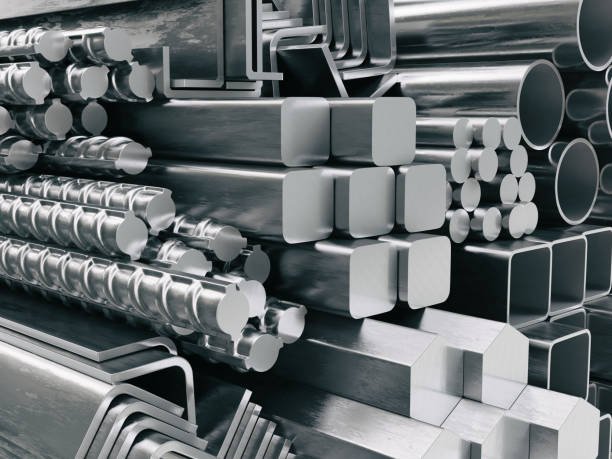
Applications of CNC Grinding
Let’s delve into the industries where CNC grinders find their applications:
Automotive
In the automotive sector, CNC grinders play a vital role in manufacturing precision components such as engine parts, transmission components, brake system parts, and steering system components.
Aerospace
CNC grinding is indispensable in the aerospace industry for producing high-precision aerospace components used in aircraft engines, landing gear, structural components, and critical flight control systems. Aerospace applications demand stringent quality standards, and CNC grinding meets these requirements by delivering precise shapes, dimensions, and surface finishes on complex aerospace components.
Medical
The medical industry extensively utilizes CNC grinders for manufacturing surgical instruments, orthopedic implants, dental components, and medical devices. The precise machining capabilities of CNC grinding ensure the production of medical components with exceptional accuracy, cleanliness, and biocompatibility, meeting the rigorous standards of the healthcare sector.
Tool and Mold Making
CNC grinders are integral to the tool and mold-making industries, which produce cutting tools, dies, molds, and precision components for manufacturing processes. CNC grinding enables the fabrication of complex tool geometries, sharp cutting edges, and smooth surface finishes, enhancing the performance and longevity of tools and molds used across various industries.
Machinery Manufacturing
Machinery manufacturers rely on CNC grinding to produce critical components for industrial machinery and equipment. CNC grinding is used to manufacture gears, shafts, bearings, couplings, and other precision parts crucial for machinery operation. The high precision and repeatability of CNC grinding ensure the optimal functionality and reliability of machinery components.
Railway Industry
CNC grinding finds application in manufacturing rail components such as rails, wheels, axles, and bearings. It ensures the precise shaping, profiling, and finishing of railway components, contributing to the safety, efficiency, and reliability of railway infrastructure and rolling stock.
>>> Read more: What is CNC Turning? Advantages of CNC Turning
Conclusion
CNC grinding stands as a cornerstone in modern manufacturing, offering unparalleled precision and efficiency in producing high-quality components across various industries. As industries continue to advance, the importance of CNC grinding in achieving tight tolerances, intricate designs, and superior surface finishes cannot be overstated.
For businesses in Vietnam seeking to harness the power of CNC grinding technology, MaTec Vietnam serves as a trusted partner. With their expertise, state-of-the-art equipment, and commitment to excellence, MaTec Vietnam provides comprehensive CNC grinding solutions tailored to meet the unique needs of each client. Whether it’s automotive, aerospace, medical, or any other sector, MaTec Vietnam stands ready to deliver exceptional results through CNC grinding technology.
